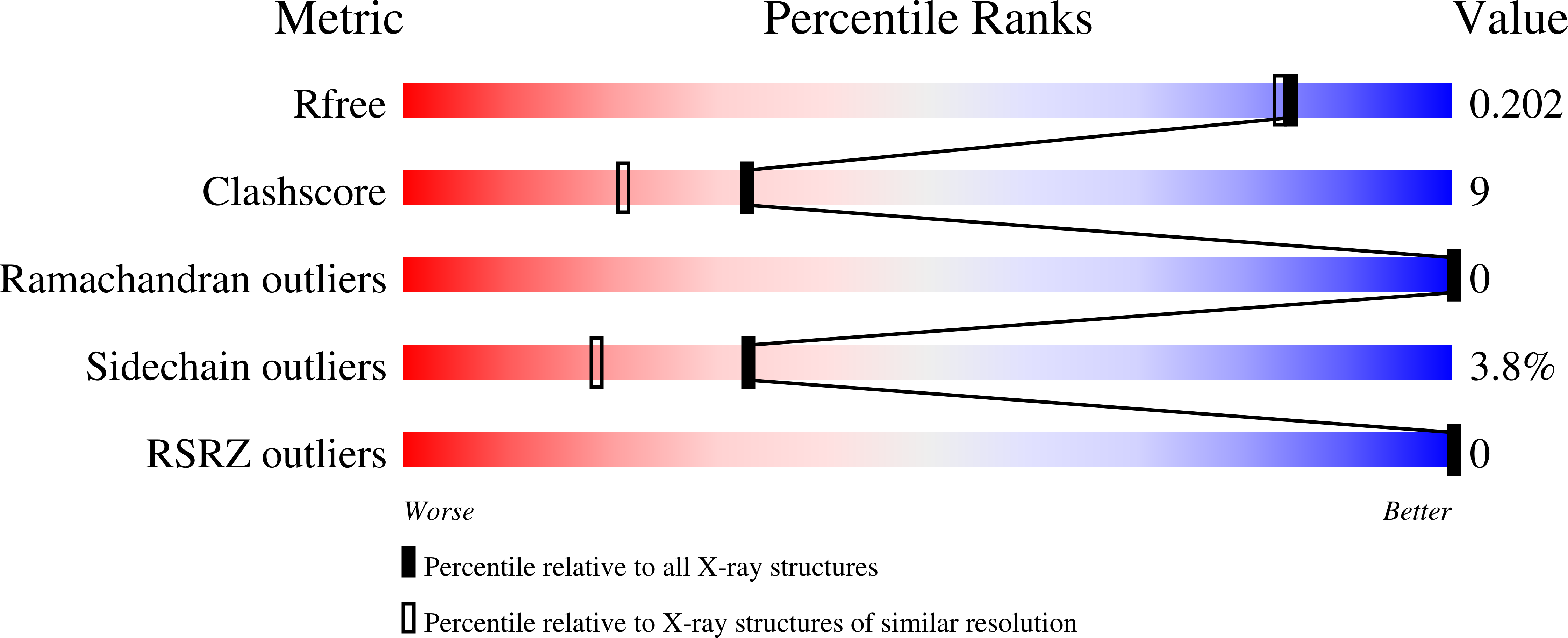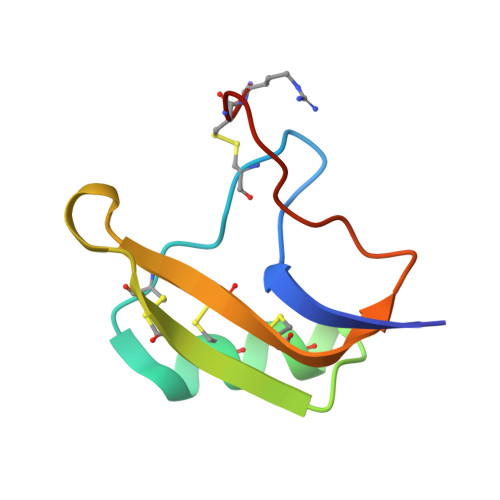Chemical engineering and structural and pharmacological characterization of the alpha-scorpion toxin OD1.
Durek, T., Vetter, I., Wang, C.I., Motin, L., Knapp, O., Adams, D.J., Lewis, R.J., Alewood, P.F.(2013) ACS Chem Biol 8: 1215-1222
- PubMed: 23527544
- DOI: https://doi.org/10.1021/cb400012k
- Primary Citation of Related Structures:
4HHF - PubMed Abstract:
Scorpion α-toxins are invaluable pharmacological tools for studying voltage-gated sodium channels, but few structure-function studies have been undertaken due to their challenging synthesis. To address this deficiency, we report a chemical engineering strategy based upon native chemical ligation. The chemical synthesis of α-toxin OD1 was achieved by chemical ligation of three unprotected peptide segments. A high resolution X-ray structure (1.8 Å) of synthetic OD1 showed the typical βαββ α-toxin fold and revealed important conformational differences in the pharmacophore region when compared with other α-toxin structures. Pharmacological analysis of synthetic OD1 revealed potent α-toxin activity (inhibition of fast inactivation) at Nav1.7, as well as Nav1.4 and Nav1.6. In addition, OD1 also produced potent β-toxin activity at Nav1.4 and Nav1.6 (shift of channel activation in the hyperpolarizing direction), indicating that OD1 might interact at more than one site with Nav1.4 and Nav1.6. Investigation of nine OD1 mutants revealed that three residues in the reverse turn contributed significantly to selectivity, with the triple OD1 mutant (D9K, D10P, K11H) being 40-fold more selective for Nav1.7 over Nav1.6, while OD1 K11V was 5-fold more selective for Nav1.6 than Nav1.7. This switch in selectivity highlights the importance of the reverse turn for engineering α-toxins with altered selectivity at Nav subtypes.
Organizational Affiliation:
Division of Chemistry and Structural Biology, Institute for Molecular Bioscience, The University of Queensland , St Lucia, Brisbane, Queensland, Australia 4072.















